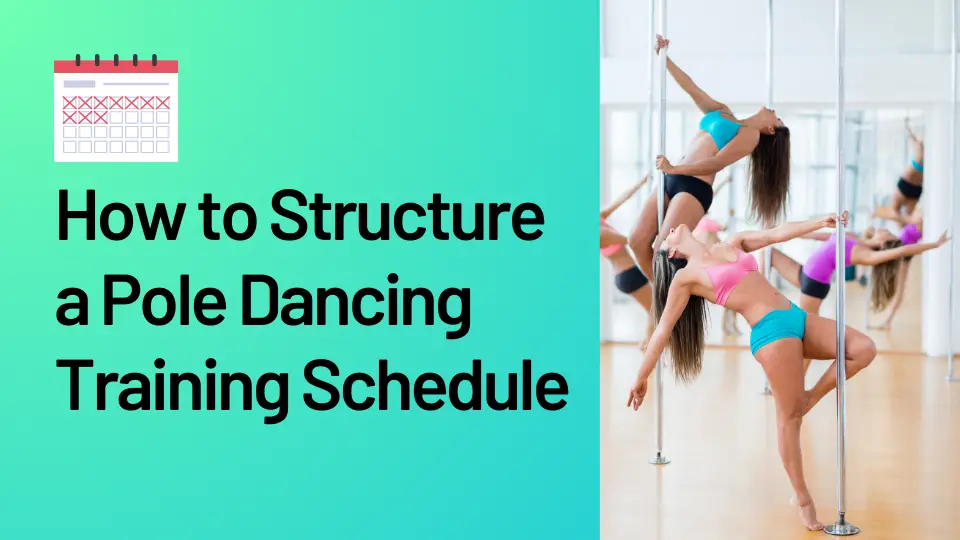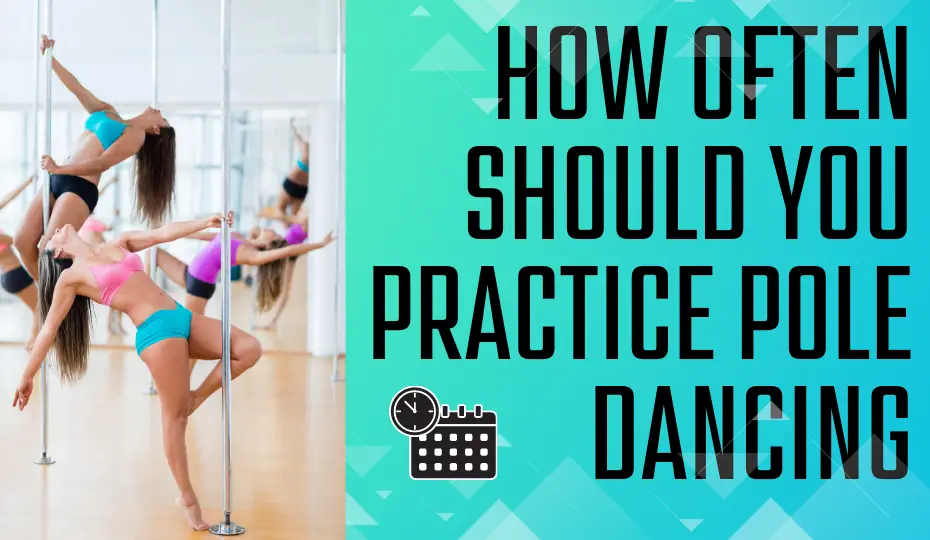Just a couple of years ago, if you’d told me that I’d be advocating for pole dancing as a fitness routine, I’d have laughed. Like many, my perception of pole dancing was clouded by stereotypes and misconceptions. But let me tell you, it was a chance encounter at a friend’s bachelorette party that altered my viewpoint. There, I discovered the incredible potential of pole dancing—not just as a form of self-expression, but as a rigorous full-body workout that could challenge even the most seasoned gym-goer.
Pole dancing can be an exceptional way to improve your fitness. It’s not merely about spinning and twirling around a pole. It involves a blend of strength, balance, and flexibility training, working all your major muscle groups. From core work to upper body strength, flexibility to endurance, pole dancing covers it all. And let’s not forget, it’s a cardio workout too!
The benefits aren’t merely physical, though. Pole dancing can build your self-esteem and body confidence like no other workout. The sense of accomplishment when you finally nail a difficult move, the beauty of expressing yourself through movement, the supportive community – it all contributes to a positive sense of self.
Table of Contents
Key Takeaways
- 🧘♀️ Pole dancing combines strength, balance, flexibility, and dance in one challenging workout. It’s crucial for beginners to start slow, ideally with 1-2 sessions per week, to prevent injuries and gradually build strength and flexibility.
- 📆 Advanced practitioners can safely dance three to four times per week, focusing on mastering complex movements, and incorporating strength and flexibility exercises into their routine.
- 🥤 Emphasize rest and recovery in your pole dance routine to prevent overuse injuries, speed up muscle repair, hydrate and maintain a quality diet for replenishing energy stores.
- 💪 A well-structured pole dancing routine includes warm-ups, strength and flexibility exercises, and actual pole dance work. Rest days are an essential part of this lineup.
- 😉 Pole dancing is a fitness journey of self-discovery, empowerment, and creativity. Enjoy the process, celebrate each victory, and always adjust your routine according to your body’s needs.
The Importance of Regular Practice in Pole Dancing

As a pole dancer, the question often arises, “how often should you practice pole dancing?” I can tell you from my own experience that regular practice is the magic ingredient that turns aspiring pole dancers into accomplished artists.
Firstly, regular practice helps to improve strength and flexibility, the bedrock of pole dancing. When you first start pole dancing, your muscles may not be used to the unique demands of the activity. Regularly engaging your core, arms, and legs in pole dancing movements allows you to build the strength and endurance necessary to perform more complex tricks and routines. Also, flexibility comes with time and consistent stretching. Greater flexibility allows you to create more beautiful lines and reach new heights in your dancing.
And then, there’s the skill of dance itself. Pole dance is not just about strength and flexibility; it’s a dance form that requires rhythm, grace, and expressiveness. Regular practice helps to refine these skills, allowing you to move fluidly from one move to the next and infuse your routines with emotion and style.
Moreover, the benefits of consistent practice go beyond the physical. Many dancers find that regular pole dancing sessions help boost confidence and relieve stress. Each time you conquer a new move or nail a challenging routine, your self-esteem takes a happy leap. Plus, focusing on your body and movement provides a fantastic mental break, melting away the stress of daily life.
Now, back to the original question: “how often should you practice pole dancing?” The answer depends on various factors, including your fitness level, experience, and personal goals. For beginners, two to three times a week can be a good starting point. If you’re more advanced or working towards a specific goal, like a performance or competition, you might need to increase your practice frequency. It’s always best to listen to your body and adjust your practice schedule accordingly, ensuring you get adequate rest and recovery time.
Suggested Frequency for Pole Dance Beginners

Embarking on the exciting journey of pole dancing can be thrilling. As a beginner, a common question is “how often should you practice pole dancing?” Balancing eagerness to learn and caution to avoid overdoing it is crucial in this initial phase.
Individual Factors Determine Frequency
The first point to remember is that every pole dancer’s journey is unique. There isn’t a ‘one-size-fits-all’ schedule for pole dancing. The frequency of your practice will depend on factors including your existing fitness level, any prior experience with similar activities, and your personal goals.
Generally, for beginners, it’s a good idea to practice pole dancing 1-2 times a week. This frequency allows your body time to adapt gradually to the unique physical demands of pole dancing, which marries strength, flexibility, and endurance in a unique blend.
Gradual Start to Prevent Injuries
The emphasis on a gentle start is primarily to prevent injuries. Pole dancing is enjoyable, but it can also be physically challenging. By easing into the practice, you give your body time to develop the required strength and flexibility gradually, reducing the risk of injuries.
Pole dancing is as much about learning new movements as it is about building strength and endurance. Pushing too hard too soon can lead to muscle strains and even more serious injuries. It’s essential to respect your body’s limits and increase the intensity of your practice at a safe pace.
Beyond Pole Dancing: Warm-ups, Strength, and Flexibility Exercises
A well-rounded pole dancing routine should include more than just dancing on the pole. It should also incorporate warm-ups, strength and flexibility exercises. Starting with a warm-up readies your body for the workout, and strength and flexibility exercises help prepare you for the main pole dancing session, reducing the risk of injury. It’s a comprehensive approach that ensures you get the most out of your pole dancing journey, safely and effectively.
Check out : Pole Dancers Workout: Unlocking the Secrets to a Fit and Fabulous Physique
Mastering Advanced Pole Dancing: A Practical Guide

Embracing the art of pole dancing means diving into an exercise regime that combines discipline, focus, and regular practice. As an advanced practitioner, [how often should you practice pole dancing]? While this may vary based on individual fitness levels and personal goals, practicing three to four times a week is generally recommended.
Challenging Techniques and Transitions
As you advance in your pole dancing journey, you’ll be exposed to more intricate techniques and transitions. Just like how you tackled your first inverted move, these new challenges require time, practice, and patience. Take your time to perfect moves like the Iron X or Phoenix, ensuring that you maintain quality over speed. Remember, rushing through these advanced moves can lead to injuries.
Building a Well-Rounded Training Schedule
A balanced approach to training is just as important as your practice sessions on the pole. A diverse training routine supports your overall fitness and bolsters your performance in advanced pole dancing.
Pole Dance Strength Training
Strength training is a non-negotiable component in the realm of advanced pole dancing. It gives you the muscle power needed for executing complex moves. Exercises like pull-ups, push-ups, and core strengthening can make a world of difference in your pole dancing capabilities.
Pole Dance Flexibility Exercises
Flexibility is another key aspect of pole dancing. A good range of motion can significantly aid in executing awe-inspiring moves on the pole. Incorporate flexibility exercises like splits, backbends, and shoulder stretches into your routine to help you reach your full potential while minimizing the risk of injury.
Pole Dance Warm-Ups
Never underestimate the power of a good warm-up. Preparing your muscles for the rigorous workout ahead is crucial to avoid strains and sprains.
Advanced pole dancing requires a harmonious blend of regular practice, strength training, flexibility exercises, and warm-ups. As you continue this journey, always remember to listen to your body and respect its limits. Pole dancing is an expression of strength and creativity—cherish every step of this remarkable journey.
The Vital Role of Rest and Recovery in Your Pole Dance Routine

When it comes to pole dancing, I often get asked, “how often should you practice pole dancing?” The answer isn’t as simple as it might seem. Like any form of exercise, the frequency of your pole dance practice depends on various factors, including your fitness level, experience, and personal goals. It’s not just about the number of times you practice; it’s also about how you structure your training schedule and the importance of rest and recovery.
Pole Dancing and Physical Demands
Pole dancing, while an exhilarating and empowering activity, can be physically demanding. You’re lifting your body weight, performing complex movements, and engaging multiple muscle groups simultaneously. It’s a great way to build strength and improve flexibility. However, it’s easy to overdo it, leading to overuse injuries.
Overuse Injuries in Pole Dancing
I’ve seen people, especially beginners, experience these overuse injuries firsthand. They often stem from practicing too much too soon. In pole dancing, some common overuse injuries occur in the wrists, shoulders, and back, primarily due to the strain of lifting and maneuvering your body around the pole. Therefore, it’s crucial, particularly for beginners, to start slow and gradually increase the intensity and frequency of their practice sessions.
The Significance of Rest and Recovery
Rest and recovery should not be overlooked in your pole dance routine. They play an essential role in preventing injuries and enhancing your performance. When you rest, your body has the opportunity to repair the muscle fibers that were broken down during your workout. Skipping rest days can lead to overuse injuries and hinder your progress, not to mention potentially causing you unnecessary pain and discomfort.
Strategies for Optimal Recovery
To promote optimal recovery, consider incorporating strategies like proper hydration, balanced nutrition, and regular stretching into your routine. Hydration keeps your muscles and joints lubricated, reducing the risk of injury and enhancing your flexibility. A diet rich in proteins and complex carbohydrates can help repair your muscles and replenish your energy stores. Stretching, on the other hand, can aid in muscle recovery and increase your range of motion.
Constructing a Well-Structured Pole Dancing Schedule
For a well-structured pole dancing schedule, remember to include warm-ups, strength and flexibility exercises, and actual pole dance routines. A warm-up prepares your body for the workout ahead, reducing the risk of injury, while strength and flexibility exercises complement your pole dance practice, making the moves easier and more graceful. And of course, don’t forget to add rest days.
Remember, rest isn’t a sign of weakness or laziness. It’s a necessary part of a healthy and effective pole dancing routine. Your body will thank you for it, and you’ll likely see improvements in your pole dance performance as a result. As with any fitness journey, be patient with yourself, listen to your body, and most importantly, enjoy the process.
How to Structure a Pole Dancing Training Schedule

As someone who loves pole dancing, I can attest to the fact that it’s a fantastic form of exercise that not only works your entire body but is also incredibly enjoyable. The secret sauce? Regular practice. But how often should you practice pole dancing? The answer depends on a variety of factors, including your fitness level, experience, and personal goals.
Finding Your Frequency
If you’re a beginner just starting on your pole dancing journey, it’s essential to start slowly to prevent injuries. Pole dancing requires strength, flexibility, and coordination, so diving in too quickly could lead to strain or even injury. It might be best to begin with two to three sessions per week, gradually increasing the frequency as you build stamina and muscle memory.
For advanced practitioners, the story is a little different. With a solid base of strength and flexibility, and an understanding of pole techniques, you can safely practice more frequently. This could range from four to five times a week, depending on your recovery rate and comfort level.
Building a Balanced Schedule
Regardless of how often you practice, every session should include a few key components to make the most of your training time. A well-structured pole dancing schedule begins with a thorough warm-up. Think dynamic stretches and light cardio to get your blood pumping and your muscles ready for action.
Next, spend time on strength and flexibility exercises. Pole dancing is a full-body workout that demands a good deal of core and upper body strength. Flexibility is also crucial for performing a wide range of moves with grace and ease.
Finally, don’t forget the actual pole dance techniques. Whether you’re perfecting a basic spin or tackling an advanced inversion, incorporating actual pole work into every session will help you progress in your abilities.
Progression and Rest
Your progression in pole dancing will impact the frequency and intensity of your training. As you master more advanced moves, you might find you need more recovery time between sessions. Rest and recovery are just as essential as the training itself – your muscles grow and repair during these periods.
Remember, everyone’s journey in pole dancing is unique. Some might progress quicker, while others might take a little more time, and that’s perfectly okay. The most important thing is to listen to your body and adjust your training schedule as needed.
In the end, regular practice, balanced with adequate rest, will lead you to improvement and fulfillment in your pole dancing journey.
Conclusion
In conclusion, pole dancing is a captivating exercise that combines strength, flexibility, and dance in a unique blend. Yet, like any other physical activity, its effectiveness relies on consistency, dedication, and, most importantly, appropriate scheduling.
If you’re a novice, it’s advisable to ease into it, starting with a couple of sessions a week. This method not only allows your body to acclimate to this new form of workout but also helps prevent unnecessary injuries. As you gain more experience and strength, you can comfortably increase your practice frequency, always being mindful of your body’s signals for rest.
Rest and recovery form an integral part of any training program. In the pursuit of achieving our pole dancing goals, we must not overlook the need for adequate rest. Listen to your body and afford it the recovery time it necessitates. Remember, progress isn’t a linear journey but rather a series of peaks and troughs that eventually lead you to your goal.
A well-structured pole dancing schedule doesn’t just mean spending hours on the pole. It’s a comprehensive plan that involves warm-ups, strength and flexibility exercises, and actual pole dancing. Mix up your routines to avoid monotony and ensure your body gets a balanced workout.
I encourage you all to embark or continue on your pole dancing journey with this newfound understanding. Remember, pole dancing is about enjoying the process, embracing the challenges, and celebrating the victories, however small they might be. It’s not merely a workout but a path to self-discovery, empowerment, and creativity. Listen to your body, adjust your routine when necessary, and don’t forget to have fun while you’re at it.


